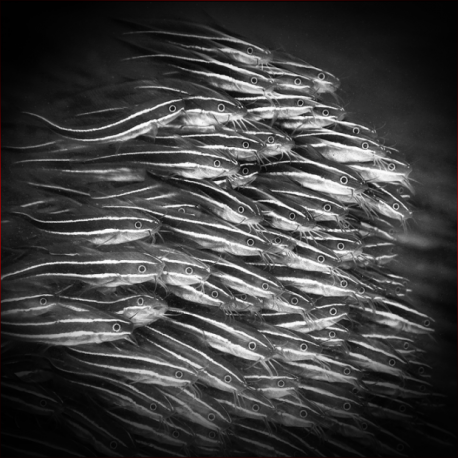More info
Datasheet
| Minimum Tank Size | 264 litres / 69.74 US gallons |
| Maximum Size | 30.5cm / 12.01inches |
| Reef Compatible | With Caution |
| Temperament | Aggressive |
| Care Description | Easy |
| Specific Gravity | 1.017-1.019 |
| Carbonate Hardness | 8-12 |
| pH | 8.1-8.4 |
General Description
The Coral Catfish, also known as Striped Eel Catfish, Saltwater Catfish, or Marine Catfish, is a species found in the Indo-Pacific region. It displays color changes as it matures, with young juveniles being entirely black and developing brown and yellow or white horizontal stripes as they grow. The adult colors tend to fade in brightness.
Aquarium Suitability
The Coral Catfish is considered suitable for aquariums with its easy care requirements. However, it should be kept in mind that they grow quite large as adults and need to be kept in groups due to their schooling behavior as juveniles.
Demands
This species has a minimum tank size requirement of 264 liters and can adapt to varying salinities, although stability is preferred. It is sensitive to copper-based medications and should be kept with caution due to its venomous spines.
Care and Hardiness
Coral Catfish are classified as omnivores, requiring a diet of fresh or frozen seafood and flaked food at least twice a day. They prefer a sandy substrate to sift through for food, mimicking their natural scavenging behavior.
Reef Suitability
Reef compatibility with the Coral Catfish is listed as "With Caution," mainly due to its aggressive temperament. Care should be taken when introducing it to a reef environment containing other species.
Aquarium Setup
For optimal care, the aquarium housing Coral Catfish should be equipped with a sandy bottom to allow for natural foraging behavior. Meaty foods should be placed at the tank bottom for easy access by the fish. Additionally, maintaining stable water parameters within the ranges of pH 8.1-8.4, KH 8-12, and specific gravity of 1.017-1.019 is crucial for their well-being.
Behaviour
While the juvenile Coral Catfish form visually stunning schools, their schooling tendency diminishes as they mature. To prevent stress and ensure proper feeding, it is advisable to keep them in groups in spacious home aquariums.
Feeding and Diet
Feeding the Coral Catfish a varied diet that includes fresh or frozen seafood and flaked foods is essential to meet its nutritional needs. Regular feeding at least twice a day helps to maintain their health and vitality.
Habitat and Distribution
In their natural habitat, Coral Catfish are commonly found sifting through the sand on and around reefs in the Indo-Pacific region. They may also venture into freshwater river systems as adults, showcasing their adaptability to varying environments.

